Eurosta Gall Fly Biology
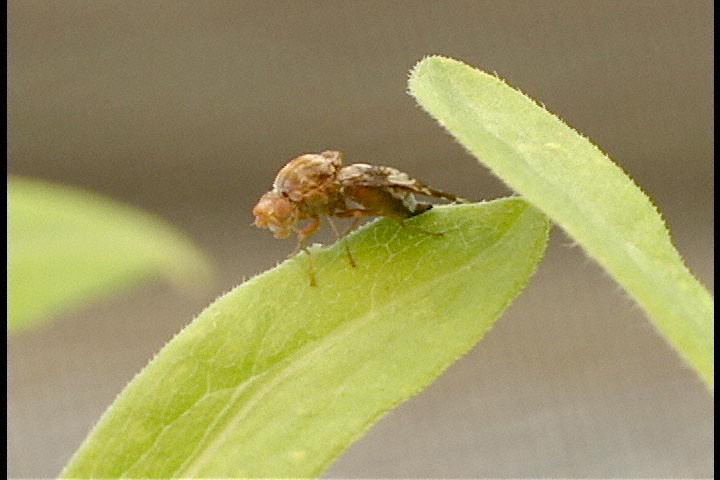
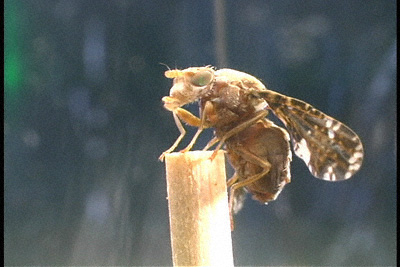
The male Eurosta solidaginis is of slightly smaller size and lacks an ovipositor on the end of its abdomen. The one shown here was photographed inside a plastic cup cage, used for mating flies. In nature, males take-up a position on a goldenrod bud. If a female approaches, the male attempts to attract her by performing a mating display that consists of rapid side-to-side rocking movements. If the female is receptive, the male mounts her from the rear and clasps her with his front and middle legs. The male then inserts his aedeagus into her ovipositor.
The time required for copulation ranges from about 15 minutes to over an hour, with an average of about 40 minutes. In order to produce large numbers of offspring with known parentage (for genetic and evolutionary research), Abrahamson lab researchers used small cages made from inverted plastic cups and window screening with small wooden sticks mounted in the cups to provide an artificial “goldenrod bud.” Usually, one female was placed in a cup with one to three males, to increase the probability that a mating will occur. Once mating takes place, the excess males were moved to other cages. Often, after mating the males were stored for future genetic analysis, while females were moved to larger cages containing goldenrod plants. This method allowed the Abrahamson lab to conduct experiments that determined the degree of genetic control of traits of interest.
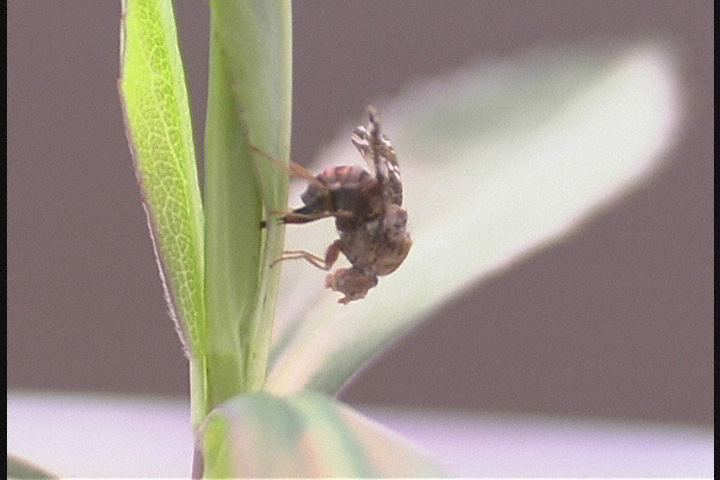
After mating, the female Eurosta solidaginis gall fly searches for acceptable goldenrod buds in which to oviposit her eggs. The female’s ovipositor is being inserted into the bud in this photograph.
The Abrahamson lab’s research demonstrated that Eurosta solidaginis has distinct host races, each of which show a high degree of fidelity to their specific host-plant species of goldenrod. One race oviposits on Solidago altissima, while the other host race oviposits on Solidago gigantea. The initial selection is probably done visually, but final selection is done by “taste” via the female’s ovipositor. The female ball gall fly walks over the bud “tasting” it with chemical sensors on her feet and antennae. If the plant is acceptable, she will then ovipuncture the goldenrod’s bud. By using a “tricky” experiment, researchers in the Abrahamson lab showed that the female gall flies “taste” the plant with their ovipositors. By wrapping plant buds of a gall fly’s non-host species with a leaf from the gall fly’s host species, female gall flies were tricked into oviposition. However, once the female’s ovipositor penetrated the wrap leaf and touched the non-host plant’s bud, the female gall fly rejected the bud.
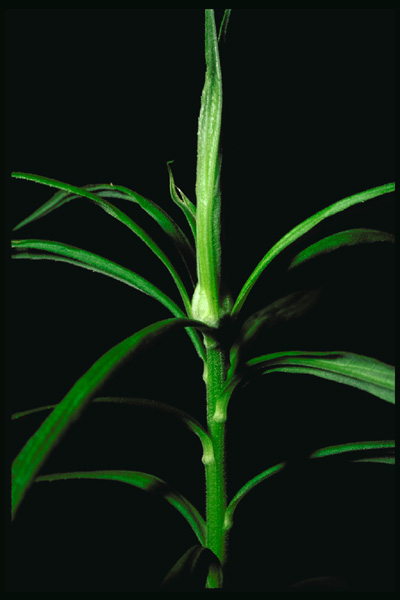
Young galls become apparent about three weeks after oviposition. The tiny gall fly larva inside the small gall excretes compounds that induce the plant to produce a gall. These goldenrod ball galls have a complex structure with a hard corky exterior and an interior of specialized nutritive tissues. These latter tissues are the ball gall fly’s only food, as they do not feed as adults.
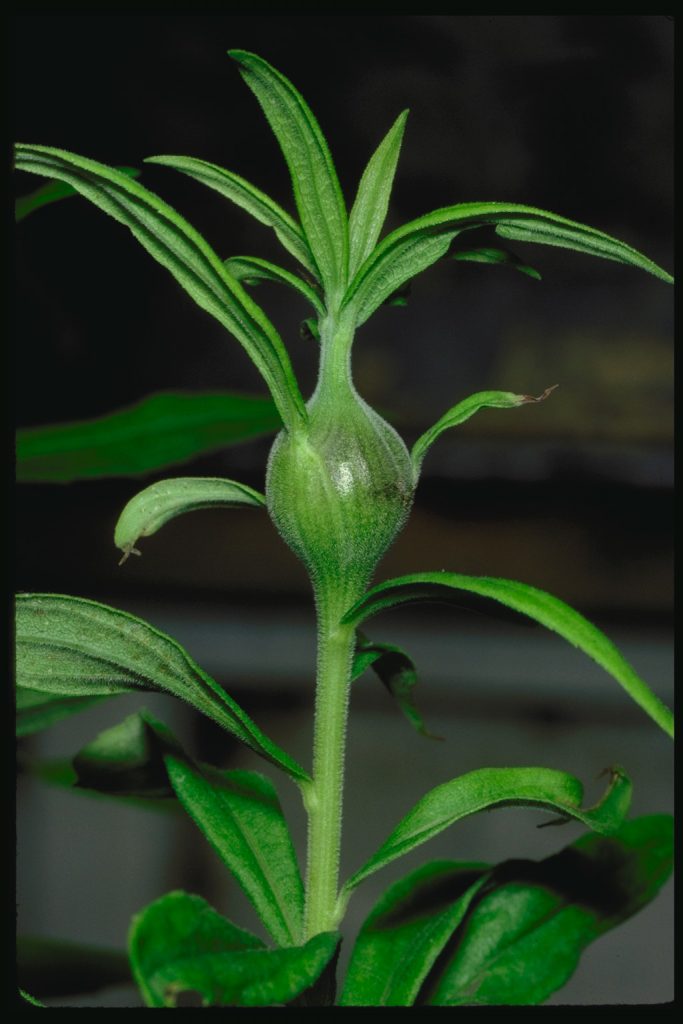
As the ball gall grows, the gall fly larva feeds and in the process excavates a central chamber that will be its home until the following spring. These galls are a common sight in old fields throughout eastern and mid-western North America.
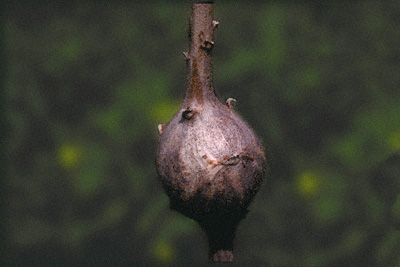
In the autumn, as the plants, stems, and galls begin to sencense and turn brown, the larva excavates an emergence tunnel from the central chamber to, but not through, the gall’s epidermis. Subsequently, the gall fly larva enters diapause for the winter. Following pupation in spring, the adult gall fly will emerge from the gall by pushing through the epidermal cap covering the emergence tunnel.